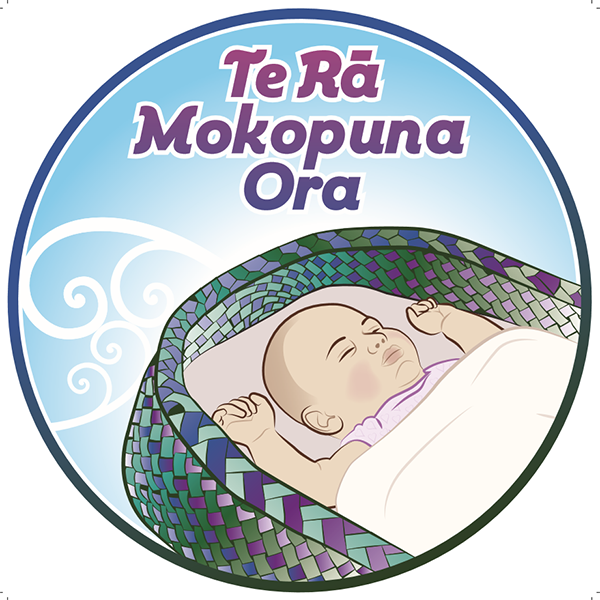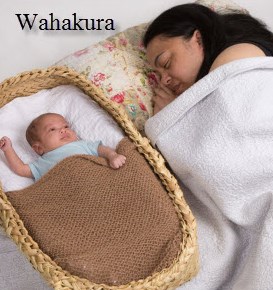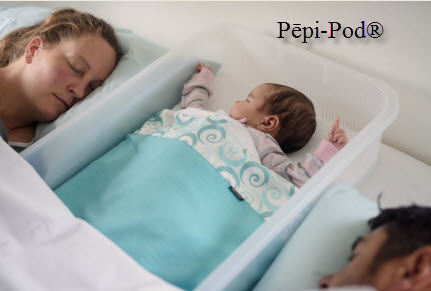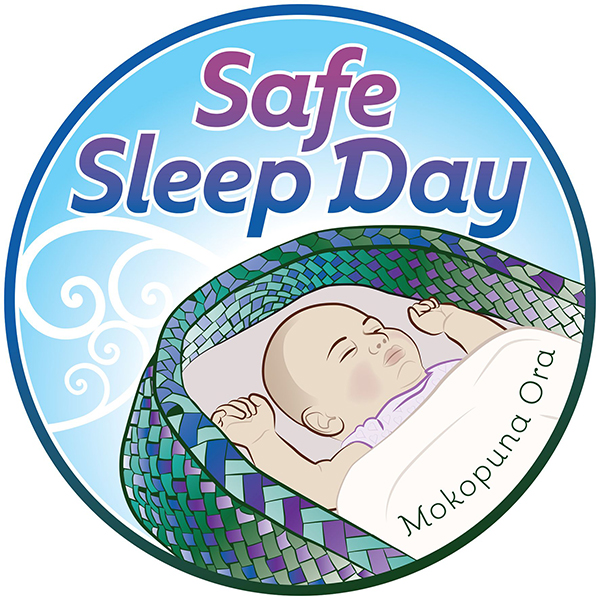Safe sleeping tips for pēpi from Hāpai Te Hauora.



Give your baby their own bed (such as a cot, bassinet, wahakura or Pēpi-Pod®).
Place your baby in their own bed for every sleep, including when visiting friends and whānau.
Have your baby's bed in the same room as you for at least the first 6 months.
Have a firm, flat mattress that fits your baby's bed well and has no gaps between the frame and the mattress.
Have nothing in the bed that might cover your baby's face - no pillows, toys, loose blankets or bumper pads.
If you choose to sleep in bed with your baby, put them in their own baby bed beside you - for example, a Pēpi-pod® or wahakura. This will help reduce the risk of your baby suffocating while they are asleep.
If you'd like find out more about a Pēpi-pod® or wahakura, ask your midwife.


It is never safe to put your baby to sleep in an adult bed, on a couch or on a chair.
The person looking after your baby needs to be sober and drug-free.
Check the safe sleep card (PDF, 221 KB) [1]
Protect your baby with a smoke-free family or whānau, whare (home) and waka (car). If you want to give up smoking:
Make sure your baby always sleeps on their back with their face clear of bedding.
When your baby sleeps on their back, they can better keep their airway clear and open.
Your breastmilk makes a big difference to your baby's health.
Breastmilk helps protect your baby from some illnesses, as a baby and later in their life.
Ask your midwife if you'd like some more support with your breastfeeding.
Check the KidsHealth breastfeeding section [3]
Car seats or capsules protect your baby when travelling in the car. Don't use them as a cot or bassinet. Car seats and capsules are not safe for your baby to sleep in when you are at home or at your destination.
If you are out somewhere, make sure your baby has a safe place to sleep. Take your wahakura, Pēpi-pod®, portacot or bassinet with you, and use it on a flat surface.
If you need financial help so that baby can have their own bed, you may be able to get some help from Work and Income. For more information visit the Work and Income website [4] or call 0800 559 009.
When your baby is sleeping, turn their head so that sometimes they face left and sometimes they face right.
Tummy time, while your baby is awake, will help protect their head shape and make their arms strong.
Find out more about positional head flattening in babies [5]

The information on this page describes the best ways to protect your baby from dying suddenly in their sleep. It aligns with the National SUDI Prevention Programme: Needs Assessment and Care Planning Guide [7].
Our thanks to Northland District Health Board for the 4 PEPE videos and to the Ministry of Health for the 'Your child: Safe sleep' video.
Our thanks to Change for our Children for the Pēpi-pod® photo.
The 2 logos 'Te Rā Mokopuna' and 'Safe Sleep Day' are reproduced from Hāpai - SUDI Prevention Coordination Service [8]. They promote National Safe Sleep Day 2 December 2022.
This page last reviewed 27 June 2022.
Email us [14] your feedback
Links
[1] https://kidshealth.org.nz/sites/kidshealth/files/pdfs/pepe-card-hapai-sudi-prevention-co-ordination-service.pdf
[2] https://quit.org.nz/
[3] https://kidshealth.org.nz/tags/breastfeeding
[4] https://www.workandincome.govt.nz
[5] https://kidshealth.org.nz/positional-head-flattening-babies
[6] https://www.health.govt.nz/your-health/pregnancy-and-kids/first-year/first-6-weeks/keeping-baby-safe-bed-first-6-weeks
[7] https://www.health.govt.nz/publication/national-sudi-prevention-programme-needs-assessment-and-care-planning-guide
[8] https://sudinationalcoordination.co.nz/events/national-safe-sleep-day-2022
[9] https://kidshealth.org.nz/node/1498?language=zh-hant
[10] https://sudinationalcoordination.co.nz/resources
[11] https://kidshealth.org.nz/node/2683?language=zh-hant
[12] http://file:///C:/Users/KatherineL/OneDrive%20-%20healthAlliance/Documents/01AAA_Website/Nutrition%20and%20obesity/2022/Mama_Aroha-instruction-A5.pdf
[13] https://kidshealth.org.nz/node/1500?language=zh-hant
[14] https://kidshealth.org.nz/contact?from=http%3A%2F%2Fkidshealth.org.nz%2Fprint%2F411%3Flanguage%3Dzh-hant